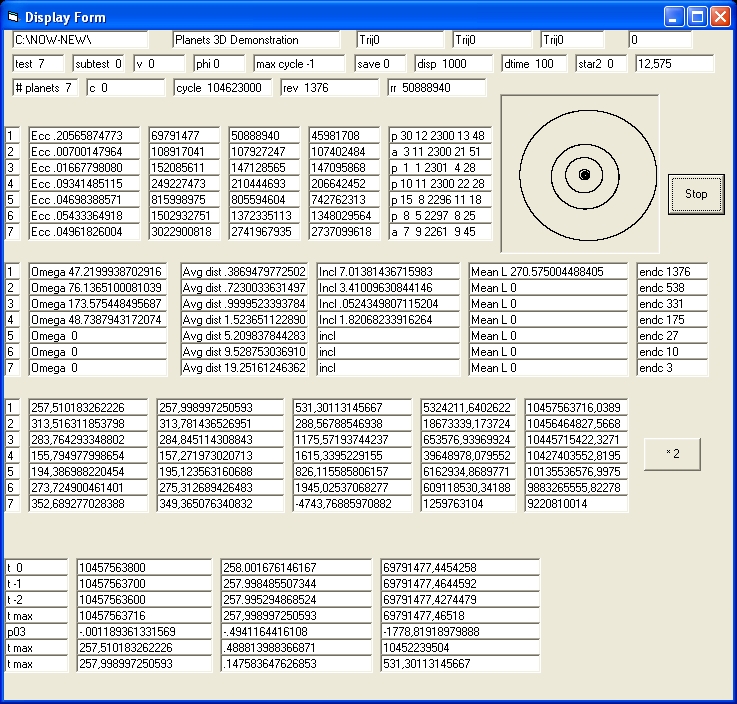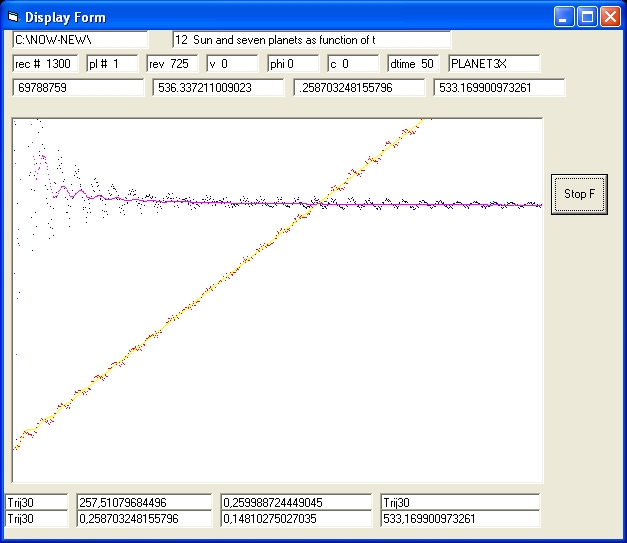- The Control Form is used to select a planet simulation and to perform a simulation.
- The Display Form shows the results of a simultion and the result of a simulation saved in a Data Bae
- The Menu Form is to select additional parameters used by a planet simulation
- The Figure Form is to select a simulation saved in a Data Base
Control Form - Operation
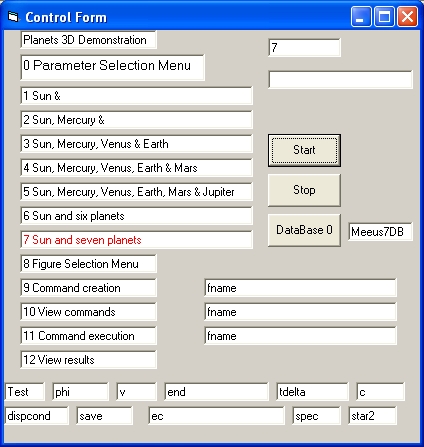
|
The control form is used to select and perform a simulation.
Those saved simulations are called figures or subtests.
|
Display Form - Operation
Menu Form - Operation
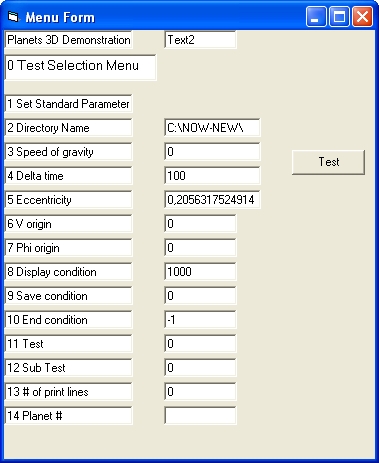
|
|
Figure Form - Operation
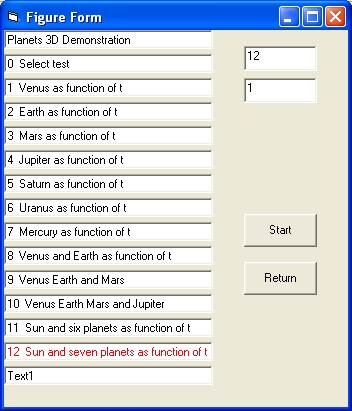
|
Reflection 1
Reflection 2
Feedback
None
Created: 19 April 2020
Back to my home page: Contents of This Document
